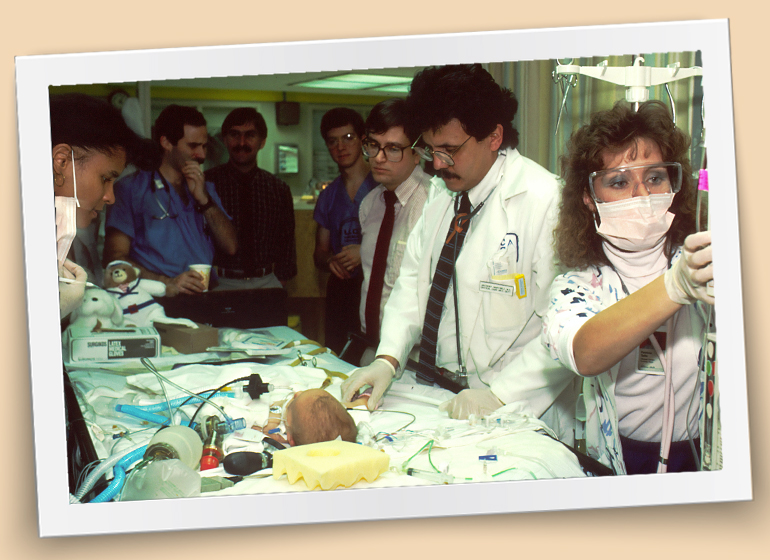In real life, neonatal resuscitation is a team effort and an interdisciplinary one at that. Why, then, are our experiences in team-based simulation training (TBST) so limited?
A retrospective pilot study published in the Journal of Perinatology attempted to answer this question. The study assessed 65 TBST events held at a Level IV NICU. More than 500 NICU staff participated, including pediatric residents, neonatal fellows, neonatologists, surgeons, neonatal nurse practitioners, registered nurses, and respiratory therapists. Ultimately, TBST was found to be feasible and realistic, and in a busy NICU, no less.
The doctor is in…but so are the NNP & co.
Not surprisingly, the need to improve communication and teamwork among nursing and physician staff is one commonly cited reason for interdisciplinary TBST. There is no arguing that the medical hierarchy is complex, and at times, daunting. Unfortunately, this hierarchy can also be detrimental during a code if good communication regarding delegation of roles and responsibilities is lacking.
As the medical literature suggests, successful resuscitation and procedural TBST are about more than learning how to deal with difficult physicians and how to avoid destructive work habits in high-stress situations. TBST allows health professionals the opportunity to overcome their initial hesitation in running codes and making mistakes. It’s about practicing and honing vital skills and troubleshooting problems together to improve patient care. As an added bonus, it helps to improve interprofessional attitudes and competencies.
How feasible is interdisciplinary TBST?
The literature supports the feasibility of high-fidelity (e.g., interactive manikin) and low-fidelity (e.g., interactive user interface) TBST for interdisciplinary NICU teams. It suggests that virtual TBST is not inferior to live simulations in a clinical environment. These findings are especially promising during the COVID-19 pandemic when virtual, alternative learning experiences are often required to protect learners.
Benefits of TBST
As is true for any job, investing in job training is a recipe for success. Some of the most commonly mentioned benefits of providing TBST for staff include:
- Improved confidence
- Improved self-efficacy
- Improved knowledge
- Improved competence
- Improved performance and action
Despite these significant benefits to TBST participants, there is limited evidence supporting the intervention’s ability to improve patient outcomes and cost-effectiveness of on-the-job training. More research with standardized methods is needed to successfully advocate for greater integration of TBST into the NICU.
Have you participated in interdisciplinary team-based simulation training? If so, let us know how it went in the comments below!
photo credit: National Cancer Institute


